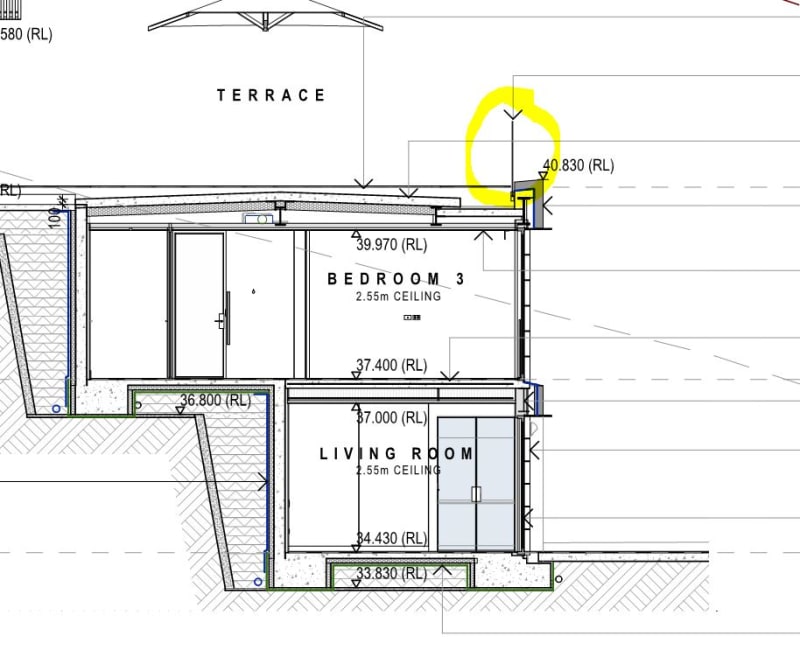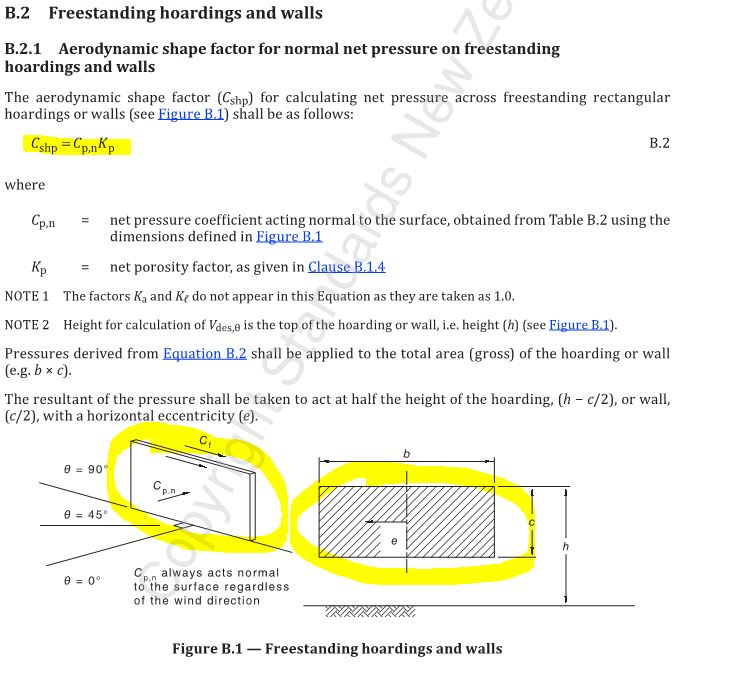-
1
- #1
Backcheckrage
Structural
I've got a glass barrier for a hillside home in NZ, and in a an extremely high wind area, and the building faces downhill.
Since it's right on top of a wall I figure it's like a parapet so then NZS1170.2 section B.2.1 applies, right?
As for the site, design wind pressures = 1.95KPAxCshp
Cshp = Cp,n x Kp = 1.63 x 1.0 = 1.63
so therefore Wind Pressure = 1.95KPA x 1.63 = 3.2 kpa !
But wait, there's more...where this barrier does a 90 degree turn, Cp,n = 3.0, cranking wind pressure up to a 5.9kpa!
Surely, there's another way to derive wind loads on this barrier? The issue is that there will be testing for this glass system because wind force is like the weight of 230mm concrete slab!


Since it's right on top of a wall I figure it's like a parapet so then NZS1170.2 section B.2.1 applies, right?
As for the site, design wind pressures = 1.95KPAxCshp
Cshp = Cp,n x Kp = 1.63 x 1.0 = 1.63
so therefore Wind Pressure = 1.95KPA x 1.63 = 3.2 kpa !
But wait, there's more...where this barrier does a 90 degree turn, Cp,n = 3.0, cranking wind pressure up to a 5.9kpa!
Surely, there's another way to derive wind loads on this barrier? The issue is that there will be testing for this glass system because wind force is like the weight of 230mm concrete slab!


